
Concept explainers
a.
To write : the logistic differential equation for the data
a.
Answer to Problem 2E
The logistic equation is
Explanation of Solution
Given information : The data is the carrying capacity is
Calculation :
The logistic equation is
Where
b.
To draw : the direction field
b.
Explanation of Solution
Given information : The data is the carrying capacity is
Graph : The solution curves will converge to carrying capacity
The direction field is shown below
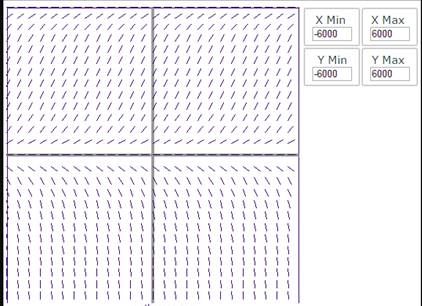
c.
To sketch : the solution of curve for initial solution and also find their significance of the inflection point
c.
Answer to Problem 2E
Inflection occurs at appoint if the graph is continuous and the concavity of the graph reverses at that point
Explanation of Solution
Given information : The initial points are
Calculation :
When the initial population is

When the initial population is
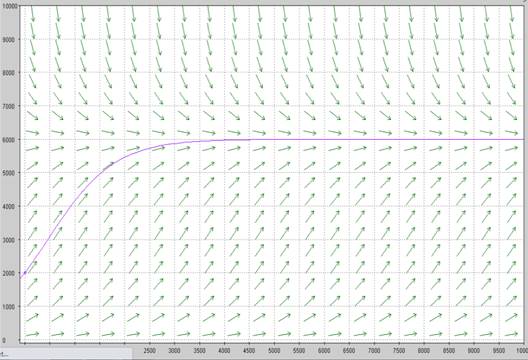
When the initial population is
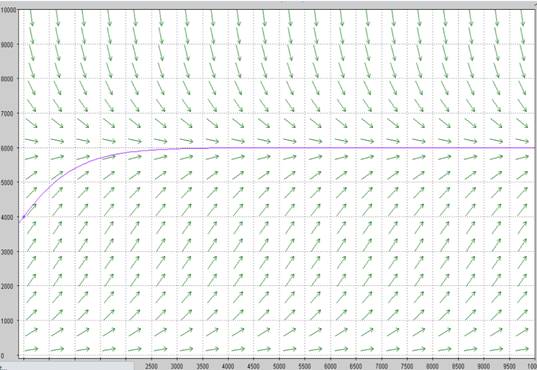
When the initial population is

d.
To calculate : the population after
d.
Answer to Problem 2E
The population after
Explanation of Solution
Given information : the question is
By using Euler’s method with step size
Calculation : step size
Initial population
To find
In the expression box write
X start is
X end is
Y start is
Step size
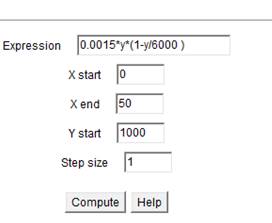
So,
e.
To calculate : the population after
e.
Answer to Problem 2E
The population after
Explanation of Solution
Given information : The question is
If the initial population is
Calculation : when
f.
To graph : the solution of part (e)
f.
Explanation of Solution
Given information : The question is
If the initial population is
Graph : from part (e)
When the initial population is
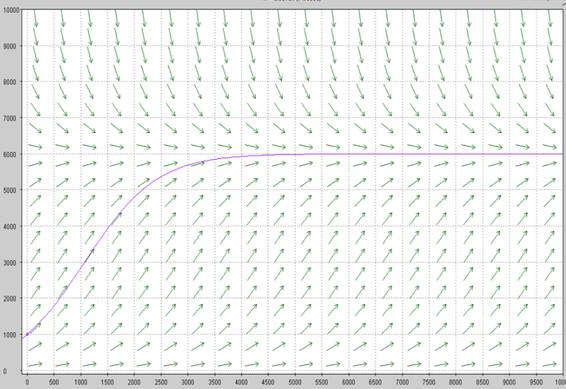
Chapter 7 Solutions
Single Variable Calculus: Concepts and Contexts, Enhanced Edition
 Calculus: Early TranscendentalsCalculusISBN:9781285741550Author:James StewartPublisher:Cengage Learning
Calculus: Early TranscendentalsCalculusISBN:9781285741550Author:James StewartPublisher:Cengage Learning Thomas' Calculus (14th Edition)CalculusISBN:9780134438986Author:Joel R. Hass, Christopher E. Heil, Maurice D. WeirPublisher:PEARSON
Thomas' Calculus (14th Edition)CalculusISBN:9780134438986Author:Joel R. Hass, Christopher E. Heil, Maurice D. WeirPublisher:PEARSON Calculus: Early Transcendentals (3rd Edition)CalculusISBN:9780134763644Author:William L. Briggs, Lyle Cochran, Bernard Gillett, Eric SchulzPublisher:PEARSON
Calculus: Early Transcendentals (3rd Edition)CalculusISBN:9780134763644Author:William L. Briggs, Lyle Cochran, Bernard Gillett, Eric SchulzPublisher:PEARSON Calculus: Early TranscendentalsCalculusISBN:9781319050740Author:Jon Rogawski, Colin Adams, Robert FranzosaPublisher:W. H. Freeman
Calculus: Early TranscendentalsCalculusISBN:9781319050740Author:Jon Rogawski, Colin Adams, Robert FranzosaPublisher:W. H. Freeman
 Calculus: Early Transcendental FunctionsCalculusISBN:9781337552516Author:Ron Larson, Bruce H. EdwardsPublisher:Cengage Learning
Calculus: Early Transcendental FunctionsCalculusISBN:9781337552516Author:Ron Larson, Bruce H. EdwardsPublisher:Cengage Learning





